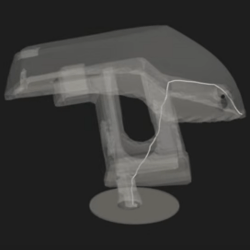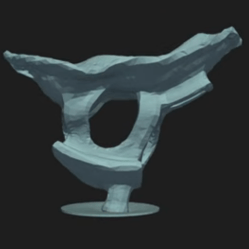Recycling 3D filament is a great idea in theory, and we come across homemade filament extruders with some regularity, but they do have some major downsides when it comes to colored filaments. If you try to recycle printer waste of too many different colors, you’ll probably be left with a nondescript gray or brown filament. Researchers at Western University, however, have taken advantage of this pigment mixing to create colors not found in any commercial filament (open access paper).
They started by preparing samples of 3D printed waste in eight different colors and characterizing their spectral reflectance properties with a visible-light spectrometer. They fed this information into their SpecOptiBlend program (open source, available here), which optimizes the match between a blend of filaments and a target color. The program relies on the Kubelka-Munk theory for subtractive color mixing, which is usually used to calculate the effect of mixing paints, and minimizes the difference which the human eye perceives between two colors. Once the software calculated the optimal blend, the researchers mixed the correct blend of waste plastics and extruded it as a filament which generally had a remarkably close resemblance to the target color.
In its current form, this process probably won’t be coming to consumer 3D printers anytime soon. To mix differently-colored filaments correctly, the software needs accurate measurements of their optical properties first, which requires a spectrometer. To get around this, the researchers recommend that filament manufacturers freely publish the properties of their filaments, allowing consumers to mix their filaments into any color they desire.
This reminds us of another technique that treats filaments like paint to achieve remarkable color effects. We’ve also seen a number of filament extruders before, if you’d like to try replicating this.





![Benchy, printed upside down on [Josh's] Core R-Theta printer.](https://hackaday.com/wp-content/uploads/2025/04/upside-down-benchy-nonplaner-e1745086286623.jpg?w=600&h=450)













